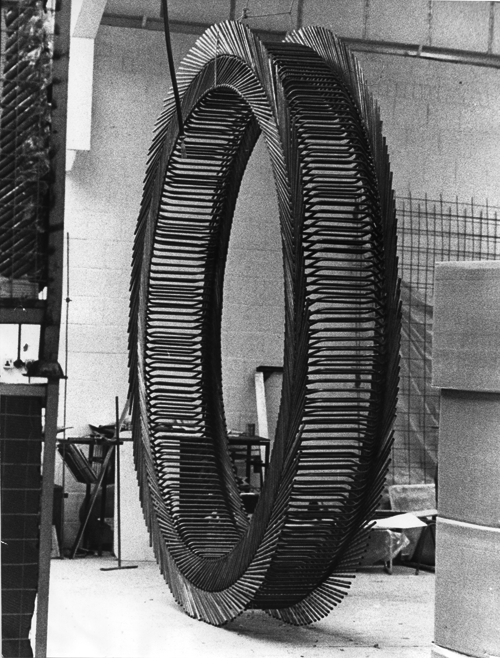Nicola Ellis on Stuart Brisley’s artist placement at Hille furniture factory

Nicola Ellis gave a short talk on Stuart Brisley’s Artist Placement at Hille Furniture Factory
In summary:
In 1970, Stuart Brisley undertook an artist placement with the Hille furniture company. The placement was facilitated by the Artist Placement Group (A.P.G). The contract for the placement was confirmed for a time period of 1 year after the initial 3 month feasibility study and is described on the placement contracts - and on Brisley’s website - as a ‘fellowship’. The term ‘placement’ was introduced to the A.P.G lexicon later down the line.
The Hille Furniture Company was started in the East End of London in 1906 by Salamon Hille, a Russian emigrant. The company renovated and reproduced eighteenth century furniture. The focus of the business was producing high quality items rather than large volumes. Hille employed skilled craftsmen in their workforce.
Among Brisley’s interests at the factory was the way production procedures seemed to be geared to the ‘odd job’ or the ‘one off’ situation. There were no rigid mass production procedures, but rather a number of possibilities in terms of current and previous designs or unique commissions which the production procedures were designed to accommodate. Brisley said ‘I was intrigued to see that the organic fluid system not only operated in terms of wide production possibilities but also that quite a large proportion of the production machinery had been modified, changed, and some had actually been built from scratch to overcome technical problems of production.’
During the placement Brisley met the factory manager regularly and reported on what he was doing for the sake of clarity and openness. This didn’t include reporting back what he saw going on, on the factory floor in relation to the workforce. Brisley didn’t see himself as either management or a workforce tool and later said ‘It is no secret at the time that there were clear divisions between managements and the labour forces across British industry, and that features of the British class system were at work together with the characteristics of the basic education system at the time.’
Brisley describes the physical outcomes of the placement:
-
I painted the machinery in the workshop to the various football team colours the workers supported. I think this to me is about the people who worked in the factory taking some ownership of the space in which they worked.
-
I instigated notice boards across the workshops for workers use. These were used for all sorts of communication including sports activities, exchange and sale of goods, social notices, grievances etc. this was an attempt to increase communication between staff and management too.
-
The wheel – a sculpture made out of 212 Robin Day chair frames representing the continuity of the factory belt which was a closed movement. The chair frames when stacked naturally curved and revealed a closure. To the worker on the factory line it is a reflection of the nature of the work - labour without an end. You might as well be the mouse on the treadmill going round and round.
The wheel was exhibited at the A.P.G exhibition Inno70 at the Hayward Gallery in 1970 and later installed outside the Hille factory itself. The work was remade and exhibited at Modern Art Oxford in 2014. Barbara StevenI - the founder and director of A.P.G - said ‘Stuart realised that he was going to have to make a sculpture or something that the workers and the staff and everyone could actually relate to, because, why wasn’t he making something, why wasn’t he building something?’